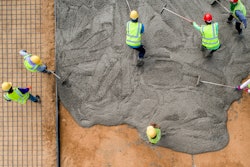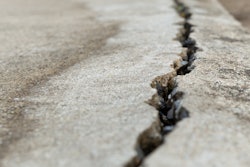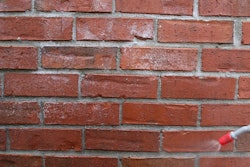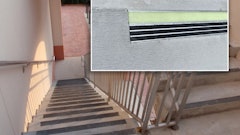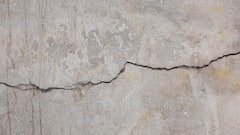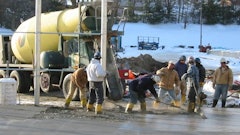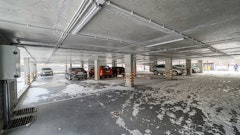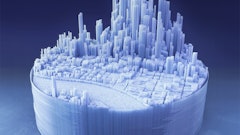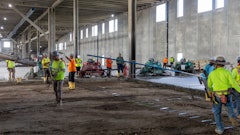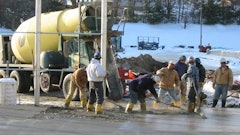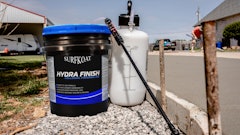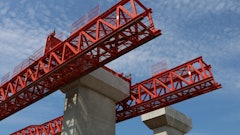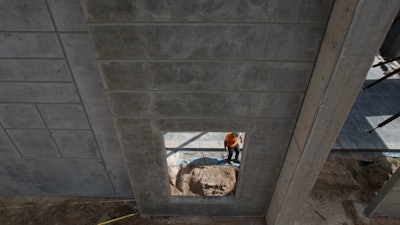
As the backbone of modern infrastructure, concrete forms the very foundation of structures ranging from towering skyscrapers and expansive bridges to residential homes and public walkways. Because of its inherent strength, adaptability, and relatively low cost compared to alternative building materials, concrete has remained the most widely used material in construction for centuries. However, the environmental impact of concrete production plus challenges posed by aging infrastructure and changing climate conditions is prompting a paradigm shift toward future-proofing concrete.
The longevity of concrete is influenced by several interrelated challenges, each contributing to its gradual degradation. Freeze-thaw cycles cause internal cracking and surface spalling, which lead to significant structural damage over time. Chemical exposure such as acidic rain, industrial pollutants, and de-icing salts also break down the cement paste and weaken the concrete matrix.
Another major challenge is chloride-induced corrosion, particularly in marine environments or areas with de-icing salts. Chlorides penetrate the concrete and reach the steel reinforcement, initiating a corrosive process that expands and cracks the surrounding concrete. This not only reduces the structural integrity of concrete but leads to further ingress of harmful agents.
Construction and maintenance practices also impact concrete longevity. Inadequate curing, improper mix design and insufficient compaction can introduce structural defects, which allow environmental agents to penetrate and deteriorate concrete over time. Poor maintenance, such as neglecting to seal cracks or repair damaged areas, leads to more extensive and costly repairs over the long run.
Modern concrete structures face additional challenges due to their complexity. Intricate designs and high-strength materials require precise construction techniques, and any deviation can compromise the structural integrity. An aged structure can also be more vulnerable to dynamic loads like traffic vibrations and seismic activity, which can worsen existing weaknesses and accelerate deterioration.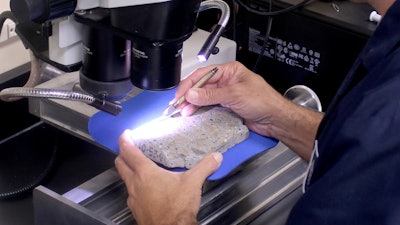 Nanotechnology is transforming construction by manipulating materials at the molecular level to enhance concrete performance.The Euclid Chemical Company
Nanotechnology is transforming construction by manipulating materials at the molecular level to enhance concrete performance.The Euclid Chemical Company
A Shift Toward More Innovative Concrete Technology
In order to meet the rising demand for durable and sustainable infrastructure, the construction industry is shifting toward more innovative and advanced solutions that expand the longevity of concrete while generating cost savings and reducing overall environmental impact.
- Advanced Cementitious Materials: One of the most promising advancements is the development of advanced cementitious materials, such as high-performance concrete and ultra-high-performance concrete. Engineered for superior strength, durability and resistance to environmental stressors, these materials incorporate supplementary cementitious materials like fly ash, slag and silica fume. This enhances the properties of traditional concrete, improving its ability to withstand aggressive environments, reducing permeability, and increasing chemical and abrasion resistance. This extends concrete lifespan while maintaining cost effectiveness.
- Carbon Capture & Utilization: Another advancement is carbon capture and utilization, which addresses both environmental and durability challenges in concrete production. This technology captures CO2 emissions from industrial processes and incorporates them into the concrete mix, where they are mineralized into stable carbonates. These carbonates enhance the concrete matrix, reducing its carbon footprint while improving density, reducing porosity, and increasing resistance to environmental factors like carbonation and chloride ingress.
- Self-Healing Concrete: Self-healing concrete is a groundbreaking advancement that autonomously repairs cracks and micro-damage. It integrates encapsulated healing agents, such as microcapsules with polymeric materials or bacteria-based systems, which react with the concrete when cracks form. This reaction seals the cracks and prevents harmful substances from entering, significantly enhancing the durability of concrete structures and reducing maintenance needs.
- Nanotechnology in Concrete: Nanotechnology is transforming construction by manipulating materials at the molecular level to enhance concrete performance. Incorporating nanoparticles like nano-silica and carbon nanotubes improves strength, durability, and resistance to environmental stressors. These nanoparticles fill voids, reduce porosity, and strengthen the interfacial transition zone between cement paste and aggregates, resulting in denser, more resilient concrete. Nanotechnology also enables smart concrete with real-time structural health monitoring.
- 3D Printing Technology: By precisely and efficiently fabricating complex concrete structures layer by layer, 3D printing technology is revolutionizing the construction industry. This approach enables intricate designs, optimizes material usage and reduces waste while minimizing the need for traditional formwork and speeding up construction. Moreover, 3D-printed concrete can integrate advanced materials to boost durability and performance, resulting in longer-lasting, low-maintenance structures.
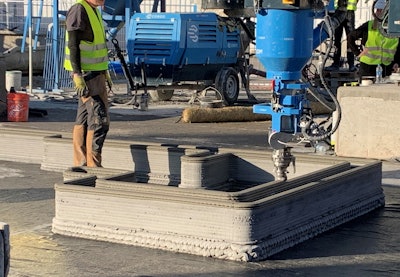 A 3D concrete printing demonstration from World of Concrete.The Euclid Chemical Company
A 3D concrete printing demonstration from World of Concrete.The Euclid Chemical Company
How Sustainability Maximizes Concrete Performance
While innovative technologies play a crucial role in enhancing the durability and lifespan of concrete, integrating sustainable practices into every aspect of concrete construction and maintenance is essential for longevity—ensuring structures are not only resilient but environmentally sound.
Optimizing material sourcing is one of the most fundamental sustainable practices. Material selection can profoundly impact the environmental footprint and performance of concrete. Choosing locally available, sustainable materials reduces transportation emissions and supports regional economies. Using recycled aggregates and industrial by-products, like recycled concrete aggregate and slag, further decreases the demand for virgin materials and lowers environmental impact.
By promoting energy efficiency, resource conservation, and environmental quality, green building standards such as LEED and BREEAM, contractors can ensure that concrete projects meet high sustainability criteria—guiding concrete design and construction toward reduced ecological impact and enhanced durability.
Through the analysis of factors like energy consumption, resource usage, and lifetime emissions, a lifecycle assessment can be used to evaluate the environmental impact of concrete structures from production to disposal—allowing stakeholders to make informed decisions that minimize environmental impact. Findings can guide material selection, construction methods and maintenance strategies, leading to more durable and eco-friendly concrete structures.
Energy-efficient construction and maintenance practices can also extend lifespan and reduce the environmental impact of concrete structures. For example, design features like reflective coatings and thermal insulation enhance the energy performance of concrete buildings. Renewable energy sources such as solar panels or wind turbines can further reduce carbon footprint and operational costs.
Integrating advanced technologies with sustainable practices offers a comprehensive approach to future-proofing concrete. By addressing both technical and environmental considerations, stakeholders can achieve durable, cost-effective, and eco-friendly concrete solutions that meet the demands of modern infrastructure while contributing to the long-term sustainability of concrete.





